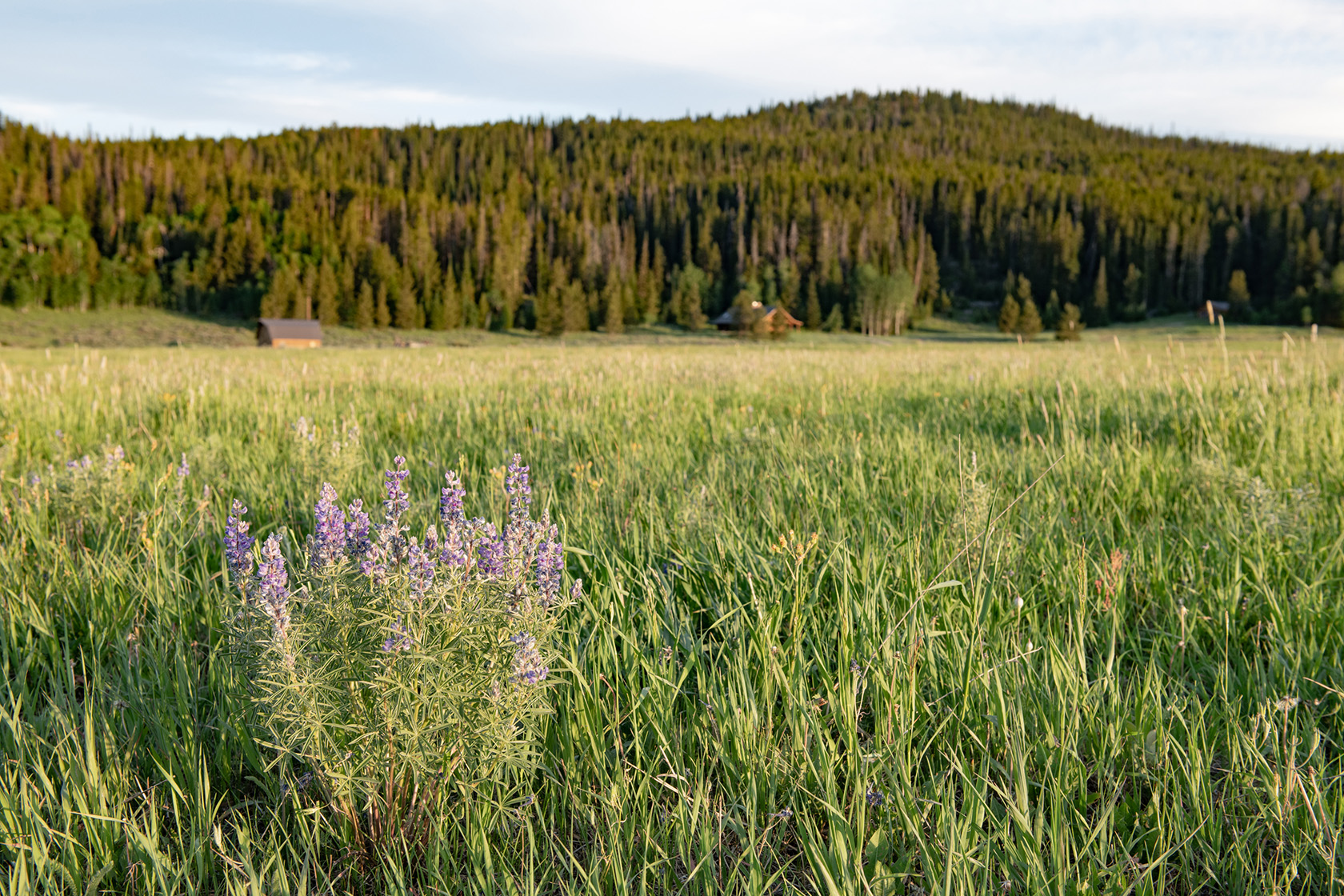
240-Acre Loomis Ranch Transferred to the National Forest
The Conservation Fund, U.S. Forest Service and Jackson Hole Land Trust announced the addition of 240-acre Loomis Park Ranch to the Bridger-Teton National Forest in northwest Wyoming. Nearly encircled by the national forest, the protection of Loomis Park Ranch has been a top Forest Service priority in the Greater Yellowstone Area for the past two decades. The Forest Service’s acquisition of the ranch effectively consolidates 280 acres within the forest, eliminates subdivision threats, preserves historical agricultural use and protects wildlife habitat. This conservation effort was made possible through funding from the federal Land and Water Conservation Fund, which was permanently and fully funded by a new law enacted last month.
Loomis Park Ranch has long been utilized for agriculture and cattle grazing, and the Bridger-Teton
National Forest is committed to that continued private use of the property. The ranch will be immediately
added to Bridger-Teton’s existing Beaver Twin grazing allotment, supporting the deep connection
between ranchers and the land in the Upper Green River watershed, home to some of the largest and
oldest grazing allotments in the country.
The addition of Loomis Park Ranch to Bridger-Teton National Forest will eliminate the threat of
subdivision in an area with high potential for forest fragmentation that could negatively impact key
wildlife habitat. Scientific data from the Wyoming Migration Initiative indicates that Loomis Park Ranch
is in and adjacent to several important elk, mule deer, and pronghorn migration corridors in the southwest portion of the Gros Ventre Mountains. Migrating elk from the Black Butte and Soda Lake winter feeding grounds stop over on the ranch, while individuals in the mule deer herd using the Red Desert to Hoback Corridor migrate through it. The ranch sits on the boundary of a known pronghorn migration corridor just 1.5 miles west of the famous Path of the Pronghorn migration corridor. Grizzly bear, black bear, moose, raptors, and neotropical songbirds all utilize this wildlife haven.
When the property went up for sale in 2016, The Conservation Fund stepped in and purchased the land,
allowing the Forest Service the time needed to acquire funding. The Jackson Hole Land Trust assisted
The Conservation Fund to hold and ultimately transfer the land to the Forest Service.
“Conserving the Loomis Park Ranch was a Wyoming-centered solution in many ways,” said Dan
Schlager, Wyoming Director at The Conservation Fund. “The culmination of tremendous collaboration, this outcome maintains agriculture, conserves wildlife, enables a unique way to enjoy outdoor spaces, and supports Wyoming’s economy through multiple uses of public land. I’m grateful to the various partners involved from private landowners, to the Jackson Hole Land Trust, to the Forest
Service who worked tirelessly on Loomis Park Ranch over several years.”
Forest Supervisor Tricia O’Connor emphasized the value of partnerships like these for the greater
good. “The Loomis Park Ranch parcel is a great example of what is possible when partners come together for the benefit of our public lands,” she said. “Without our partners, the land transfer could not have taken place and because of that we now have a more intact National Forest System for the benefit of our public and the many uses this land will see in future generations.”
The recreational economy of nearby Jackson Hole is dependent on outdoor tourist destinations like
Bridger-Teton National Forest and the adjacent Grand Teton and Yellowstone National Parks. The
Jackson Hole Land Trust continues to invest in these landmarks. With the launch of the Green River
Valley Program (GRVP) in 2016, the Jackson Hole Land Trust has expanded its mission to include
protecting open spaces in Sublette County. The GRVP works to conserve lands that contribute to
productive local agriculture and provide critical connectivity to the historic wildlife migration corridors
that run across Northwest Wyoming.
“We were excited to be part of this collaborative approach to protect the Loomis Park Ranch through its
incorporation into the Bridger Teton National Forest,” said Liz Long, Interim Co-Director and
Director of Conservation at the Jackson Hole Land Trust. “This project embodies the spirit of our
work to provide migration connectivity and stopover habitat to our region’s wildlife and to support
agricultural operations. The protection of properties such as the Loomis Park Ranch, which holds
significant conservation values, is our priority, and we were proud to be a partner in preserving this
important piece of open space forever.”
This Bridger-Teton National Forest effort was funded by the federal Land and Water Conservation Fund
(LWCF), which in August 2020 was ensured full and permanent funding with the enactment of the Great
American Outdoors Act. The LWCF is a bipartisan, federal program that uses a percentage of proceeds
from offshore oil and gas royalties—not taxpayer dollars—to acquire critical lands and protect our
country’s best natural resources and recreational access for more than 50 years. Wyoming’s
Congressional delegation representing this project include U.S. Senator John Barrasso, U.S. Senator Mike Enzi and U.S. Representative Liz Cheney.